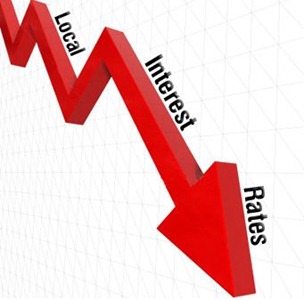Returns from bank Fixed deposit (FD) are at their lowest point, attracting lower interest from the retail investors on account of low value for money when compared with high inflation rates. This leads to very negligible real rate of return when adjusted with the inflationary cost over-run to interest income.

As per a report on the Economic Times,
“The latest figures released by RBI show a 13.8% growth in deposits as banks have raised fresh deposits of Rs.529,221 crore between April 2009 and February 2010. The growth is lower than 16.8% recorded between April 2008 and February 2009. This is reflected in the sharp slowdown in term deposits of most banks.”
Currently, HDFC Bank provides a return of 6.5% on FDs ranging from 1 year 1 day to 1 year 15 days, effective from February 19, 2010. Bank of India will now pay 6.5% interest on FDs for 9 months to 1 year period as against 6% earlier. In short, currently the FD rates offered by most of the Indian banks, for a period of around 1 year, revolve around 6.25% to 6.75%.
For FDs which comes with a tax-saver clause, with a minimum 5 year investment horizon, HDFC provides 7.5% interest (effective from February 19, 2010) as against 8% provided by some of the small saving schemes like National Savings Certificate (NSC) and Public Provident fund (PPF). However, PPF is a long term investment instrument with a 15 year time horizon.
Compare above figures with an average of 10-11% bank deposit rates with investment schemes of 5 years coupled with tax-saving advantage, offered just a couple of years back, with a falling trend in the inflationary environment. The real rate of return then was a mouthful of interest at least over a decade or so.
More recently, RBI has hiked Repo and Reverse repo rates by 25 basis points to 5% and 3.5% respectively, in a sudden step to hike the rates just a month ahead of the RBI policy meet scheduled on April 20, 2010. This step was taken by RBI on account of rising inflation which needed to be curbed by tightening of monetary policy by the RBI. This comes as an initial cue by the RBI as to reversal of the rate cycle from here on.
It is estimated that the repo rates can rise more from here, during the FY 2010-11, by around 100-125 basis points. This step could lead to normalization of the rate cycle, after witnessing a sharp compression on account of global recession. This rate hike could also play a crucial role in curbing rising inflation.
Retail investors are increasingly shifting their bank deposit investments in high-yielding assets like Equity and Corporate FDs, in order to combat low real returns adjusted with high inflation. In current competitive environment, banks tend to lose low cost deposits at prevailing depressed rates on account of other high yielding avenues for retail investors.
As the economy witnesses sustained recovery, the demand for funds increases on account of higher need of capital expenditure to boost growth. Higher demand for funds, in effect, calls for upsurge in interest rates to fund infrastructure and social spending needs of retail investors and government both. With higher demand for funds, bank deposits are likely to see an upsurge on increased off-take of loans and disbursements over next one year.
Do You Feel Bank Deposit Rates can Increase from here?

I accidentally came upon your post. How valid was this post in 2010 when interest rates where not high. Now they are at their peak and every one is asking the reverse question. I believe that this is the best time to secure the fixed interest rates for long term. Check out http://insight.banyanfa.com/?p=103.
Regards
BFA